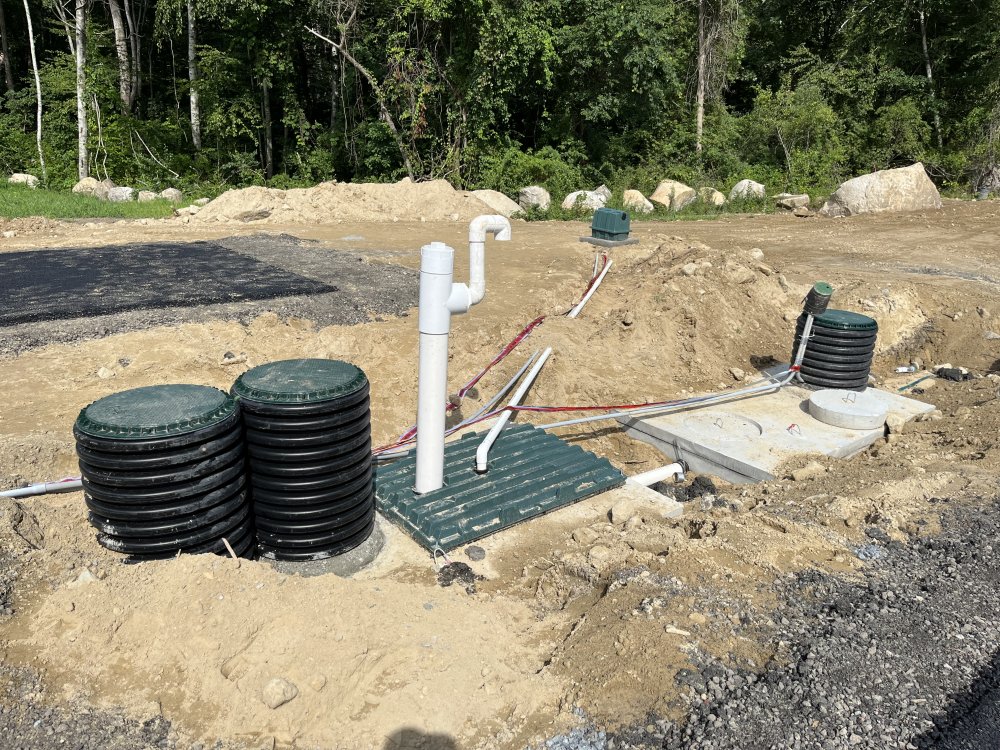[Tools & Resources]
Tips for Reliable Septic Systems at Community Residences
At CIL, we’ve seen firsthand how small habits can lead to big problems—especially when it comes to septic systems. Recently, a community residence faced a septic system failure that perplexed the staff at the home as well as the engineers brought in to figure out the issue. The culprit? Sanitary wipes flushed into the system. Most sanitary wipes contain quaternary ammonium compounds or “quats.” Quats are antibacterial and antiviral agents that control germs on surfaces and are often found in disinfectant wipes, sprays, and other household cleaners. These wipes not only clogged the tank but also killed the bacteria needed to break down waste. Without these bacteria, the septic sand in the leach field became clogged, and the waste had nowhere to go and no ability to break down.
This experience taught us valuable lessons about designing and maintaining septic systems to handle the heavy use that community residences demand. From strategic design choices to proactive maintenance, here are some best practices to keep everything flowing smoothly and prevent costly, messy repairs.
smart designs for heavy use
Gravity over Pumps (When Possible):
Gravity-fed septic systems are simpler and require less maintenance than pump-up systems, which push wastewater uphill to the leach field. While pumps can be a necessity in areas with high water tables, they add complexity and additional upkeep. Gravity-fed systems rely solely on natural gravitational forces to move wastewater from the septic tank to the leach field. In contrast, pump-up systems use a mechanical pump, which introduces more components that can fail. When site conditions allow, a gravity-fed septic system is the better choice for its simplicity, reliability, and cost efficiency.
The Bigger the System, the Better:
Many states have requirements regarding the size and capacity of a septic system. In Massachusetts, Title 5 regulations require septic systems to handle 110 gallons of wastewater per bedroom per day. However, community residences often have higher usage. To meet demand, design systems capable of handling 150 gallons per bedroom per day, ensuring the system can handle the high usage at a community residence.
Separation of Grey and Black Water:
If your budget allows, designing separate systems for grey water (showers, laundry, floor drains) and black water (toilets, kitchen sinks) reduces the risk of chemical interactions that can harm the system’s bacteria.
Maintenance That Keeps Things Moving
Keep Your Septic Tank Servicer on Speed Dial:
While most family homes pump their septic tanks every 2-3 years, our community residences get pumped every six months—four times the standard. This proactive approach ensures that solids don’t build up and prevents system overloads.
Bidets to the Rescue:
Sanitary wipes may promise convenience, but they wreak havoc on septic systems. They don’t break down, and can kill the helpful bacteria essential for waste break down. We educate residents and staff to keep these “flushable” foes out of the system entirely. Encouraging the use of bidet toilet seats as an alternative to wipes can be a win-win—better for the environment and the septic system.
Inspect, Detect, Correct:
Regular visual inspections are key to spotting early signs of trouble, like unusual odors or effluent pooling on the ground.
A well-designed and well-maintained septic system is essential to keeping things running smoothly. By planning ahead, staying vigilant with maintenance, and flushing out bad habits, we can ensure our systems remain efficient, reliable, and ready to support the needs of the community residences.
Please contact us here if we can make this page more accessible for you.











